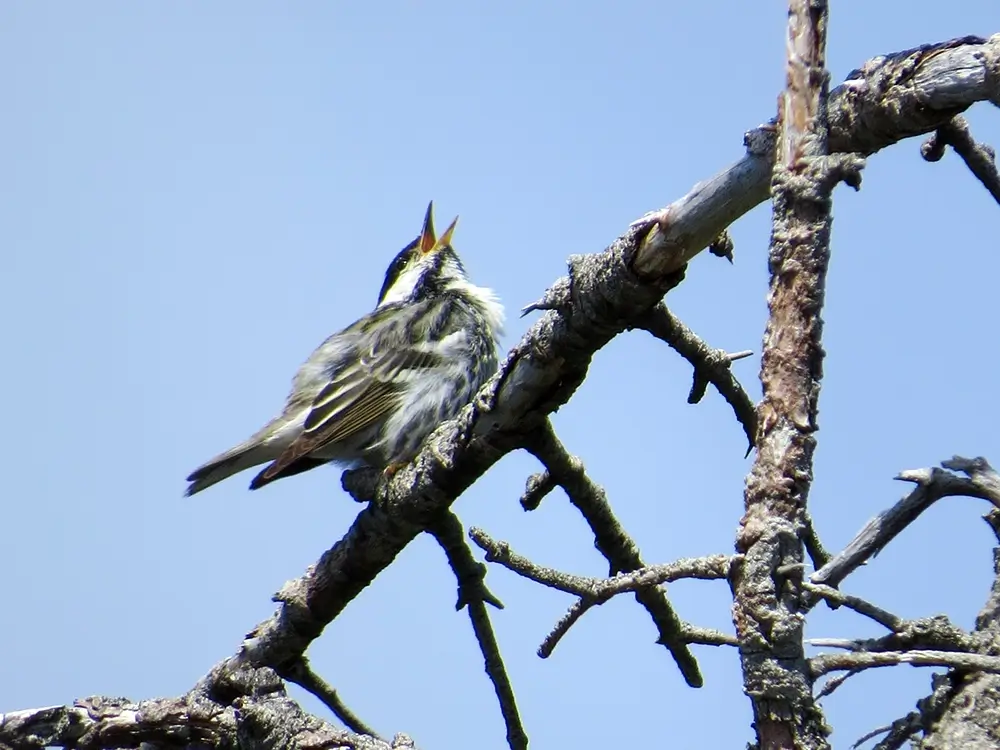Roughly 275 species occur regularly in New Hampshire. Of these, 193 have been documented breeding (or suspected of breeding) since 2000, although more than 20 of these are irregular or limited to only a handful of locations. Another 85 species can be found annually during migration or winter, and many more occur as rare migrants or vagrants. Each breeding and regularly-occurring non-breeding species has been assigned to a trend category. Whenever possible, scores are based on Breeding Bird Survey and other data from New Hampshire, sometimes in comparison to our neighboring states. For rare, hard-to-detect, and non-breeding species it was necessary to look farther afield and/or at less rigorous data sets. Trends were determined for the last 50 years, although more recent and shorter-term trends had priority if they were significantly different.

The population has approximately doubled (or more) over the previous 50 years. This category is reserved for widespread species that are not recent colonists to the state.
The population has shown consistent increases but of lesser magnitude than a strong increase. This category includes recent colonists (e.g., Sandhill Crane, Least Tern) and species that have recently (e.g., last 10-15 years) increased after long-term declines, suggesting some level of recovery.
Any increases or decreases are so small as to be within the expected range of variation.
The population has shown consistent decreases but of lesser magnitude than a strong decrease. This category includes species that have recently (e.g., last 10-15 years) declined after long-term increases (e.g., Northern Mockingbird), suggesting a change in population trajectory.
At least 50% of the population has been lost over the previous 50 years.
There are not sufficient data to determine a trend. This may be because the species is rare, nocturnal, or occurs in hard-to-survey habitats. Many migratory species that breed in arctic or boreal Canada are in this category, although every effort was made to seek out at least general trend information in these cases.v
Although trends are presented separately for breeding and non-breeding species, note that most breeding species are migratory. In many cases they are more common in New Hampshire outside their breeding season (e.g., Green-winged Teal, Double-crested Cormorant). So while they are included in the appropriate habitat(s) in the habitat section, these species are far more likely to benefit from New Hampshire conservation initiatives focused on non-breeding habitat and threats.
For breeding species, the data show:
The differences from the 2011 Conservation Guide are primarily due to more data being available for species previously placed in the uncertain/unknown category. This has resulted in more than half of those species being reassigned to increasing/stable or decreasing.
For non-breeding species, the data show:
Contact Headquarters

National Wildlife Federation Affiliate
Website By CleverLight
Information for the species profiles on this website was compiled from a combination of the sources listed below.
The Birds of New Hampshire. By Allan R. Keith and Robert B. Fox. 2013. Memoirs of the Nuttall Ornithological club No. 19.
Atlas of the Breeding Birds of New Hampshire. Carol R. Foss, ed. 1994. Arcadia Publishing Company and Audubon Society of New Hampshire
Birds of the World. Various authors and dates. Cornell Laboratory of Ornithology.
Data from the Breeding Bird Survey
Data from the Christmas Bird Count